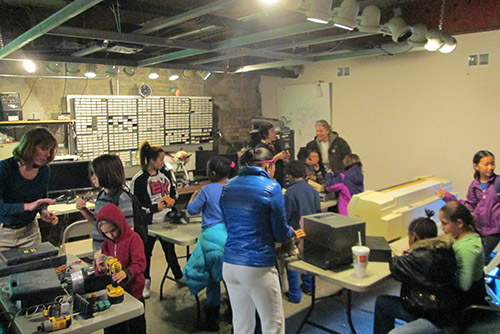X-RAY RUNS: Apply for Beamtime
2017 Nov 1 - Dec 21
2018 Feb 7 - Apr 3
2018 Proposal/BTR deadline: 12/1/17
2018 Apr 11 - Jun 4
2018 Proposal/BTR deadline: 2/1/18
Our science outreach team, Xraise, is tapping into the e-waste stream to provide a gateway to STEM for kids. Printers, cassette recorders, and DVD players are chock full of parts—motors, lights, gears, switches, buttons, pulleys, belts, liquid crystal displays, and speakers—that employ standards-worthy concepts of physics, mathematics, and engineering. It’s undeniably captivating to examine the design of these intricate systems, it’s exciting to bring the components back to life, and it’s fun to get creative building something new.

Last fall, Xraise joined forces with Ithaca Generator, Ithaca’s vibrant new community MakerSpace, and GIAC, the Greater Ithaca Activity Center, to pilot a new afterschool program, “Scrappy Science”. Armed with screwdrivers, pliers, and glue guns, twelve 5th graders, (mostly girls) gleefully unleashed their curiosity and creativity on a pile of junk. No screw was left unturned as inquisitive minds explored how one part influenced another. As these young explorers prodded with a 9-volt battery, the din of whirring, buzzing, and popping—punctuated by oohs and ahhs—marked a re-awakening.
The next couple weeks were spent with determination and purpose as kids prepared for the showcase. Motors that used to spin CDs were spinning markers into a blur of colors. Computer speakers were now broadcasting the pulses of a finger-spun stepper motor. By the time they reached the event, a toy motorcycle had been transformed into a kinetic interaction of gears exhibit, an old disk drive transformed into a miniature merry-go-round, and an 8-track speaker was reincarnated into a bounce-house for a marble.
Scrappy Science complements formal STEM education by affording kids the ownership that comes with experiencing STEM in an environment of self-guided discovery and creative expression.
Submitted by: Erik Herman, Cornell University
02/13/2014
